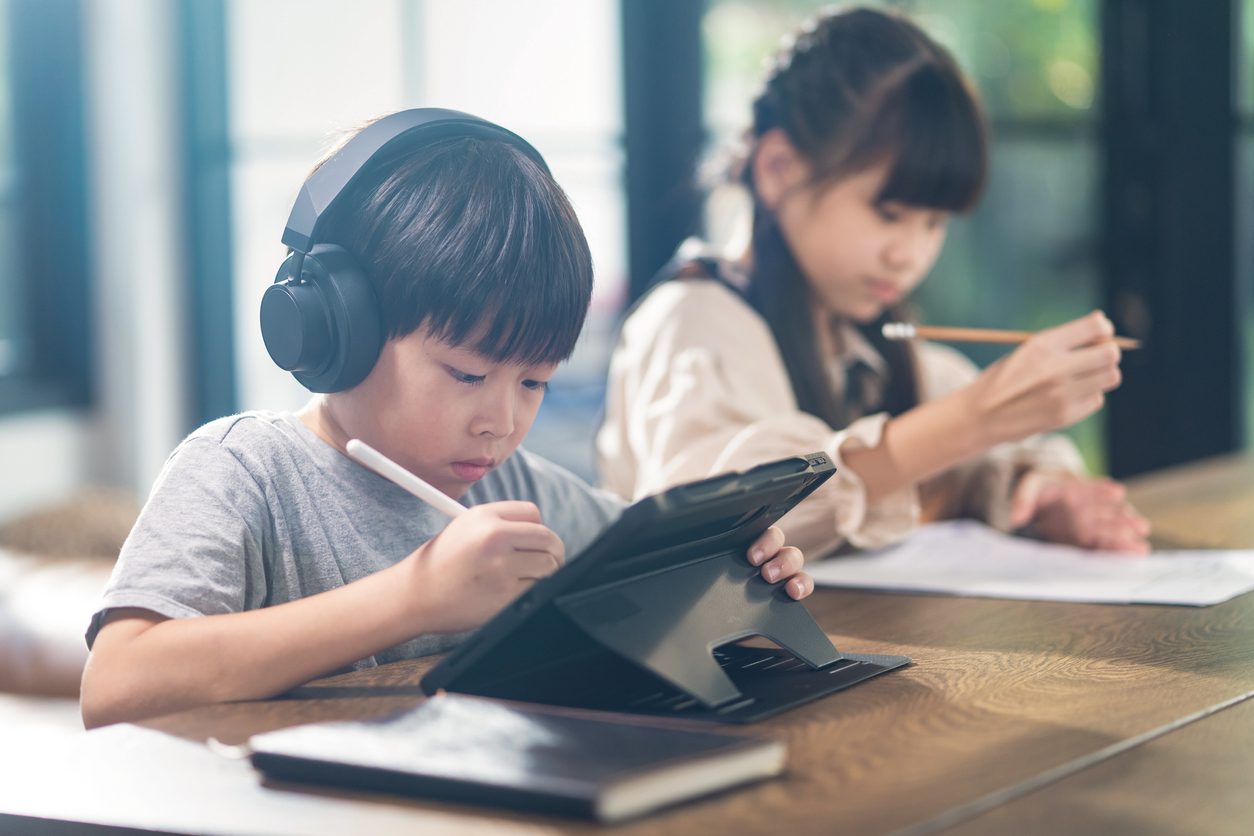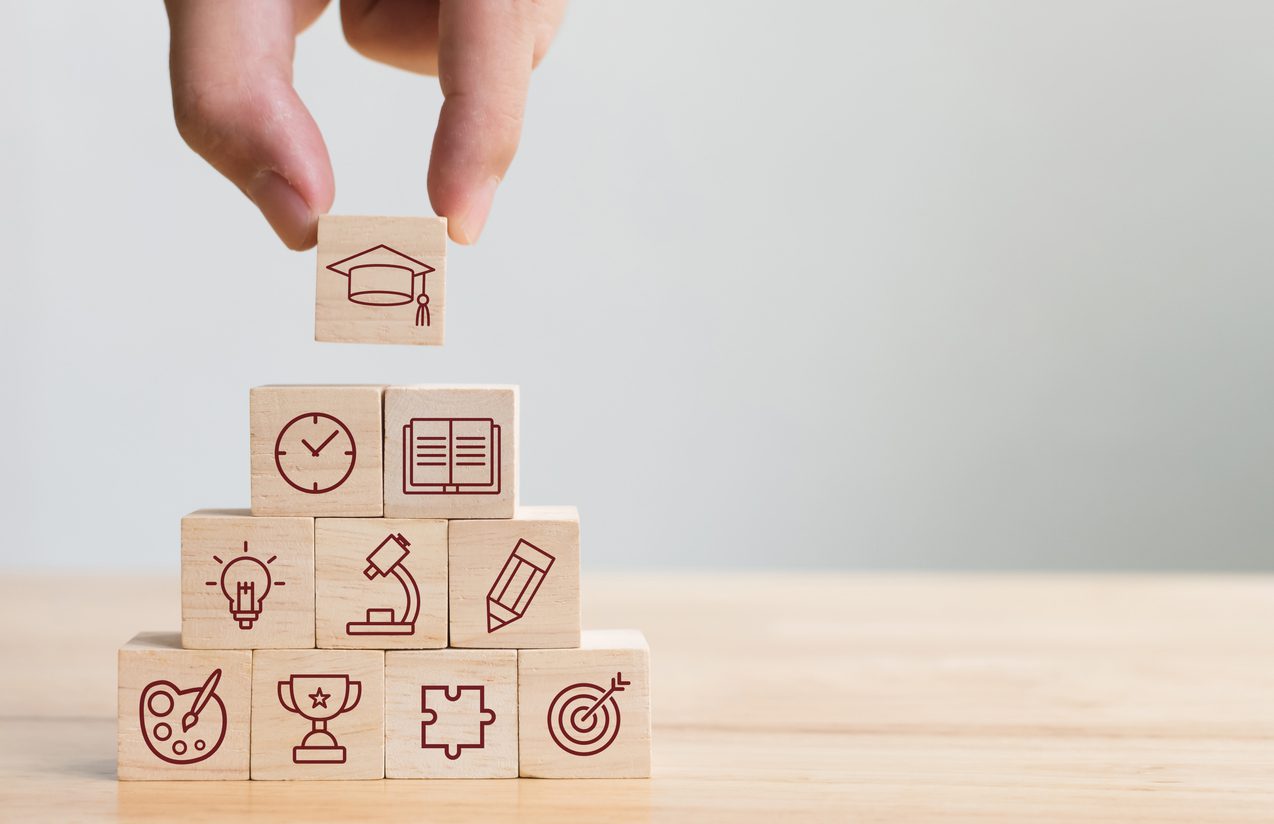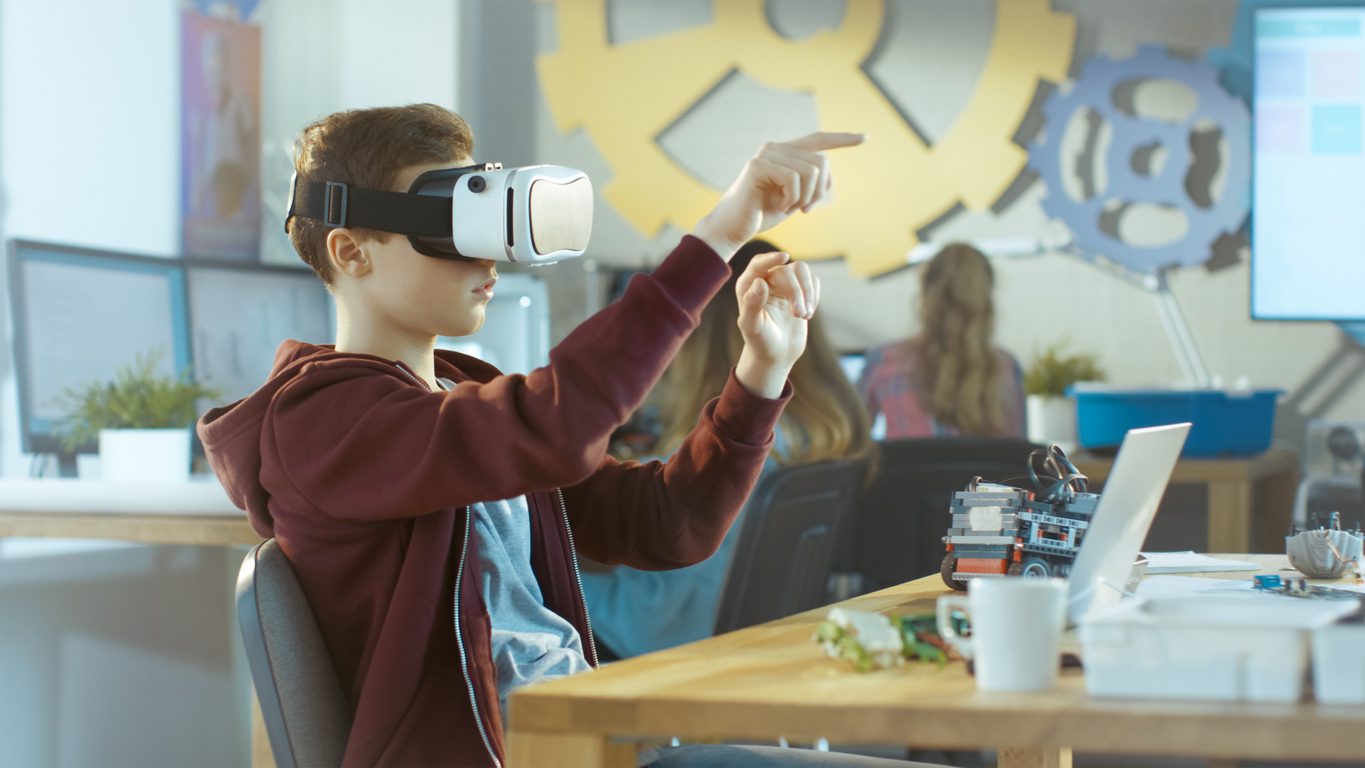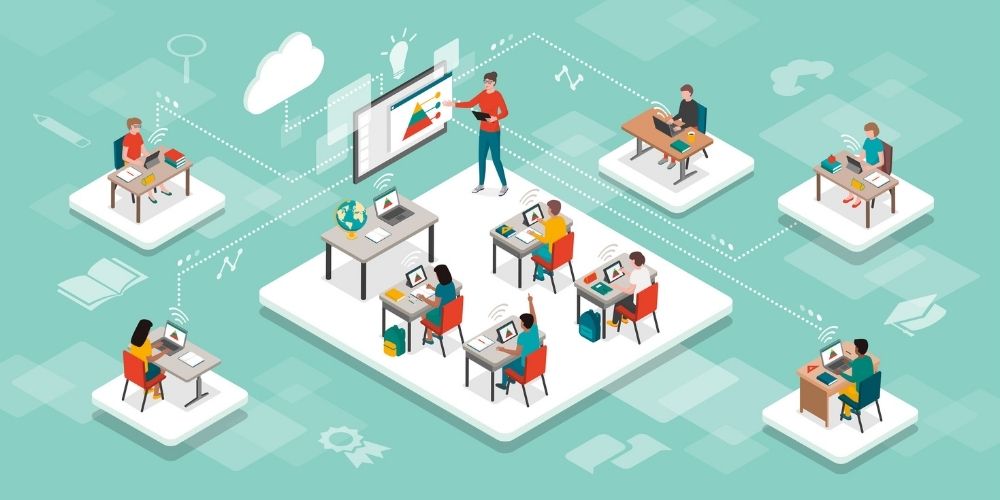Why can’t I just use a calculator, Miss?” Scott had more gumption than me, asking our teacher such a provocative question in the middle of Year 12 Maths. Collectively, the class was curious. Perhaps not so much about the answer, but certainly about how Mrs Dickson planned to respond to Scott’s cheek.
“You’re not going to have a calculator in your back pocket to help you out wherever you go,” she said.
The year is 1998 so Mrs Dickson’s answer stacked up at the time. Today, with more than 6.3 billion smartphone users globally, most people, in fact, do have a calculator in their back pocket.
Scott, 1: Mrs Dickson, 0.
A balanced approach
Even if maths isn’t your strong point, you have likely worked out that it’s been more than 20 years since that anecdote took place. And, to shamelessly borrow an overused cliché, a lot has changed since then. Technology has revolutionised the way we live and, as it continues to evolve, so too does the world around us.
In the classroom, tech has been a game-changer. It has expanded access to education, it has increased opportunities for communication and collaboration, and it has given students more responsibility for their own learning. More recently, it has been education’s saving grace, allowing students to learn from home while schools all but closed during portions of the ongoing COVID-19 pandemic.
Yet, for many, the sword was double-edged. Technology was convenient, but often frustrating, and the demands on parents to play the role of teacher, especially if they were also working or parenting younger children, could be overwhelming.
In the post-pandemic setting, experts believe a hybrid model – one that strikes a balance between online learning and physical teaching – will eventually surface as the new normal, particularly at universities. Author and education technology consultant, Dr Karl Sebire, says the extended time spent communicating through devices has helped us appreciate the value of face-to-face education.
“If there’s anything we’ve learnt, [it’s] how important the physical space is – the social interactions, being in a space with your teacher and your peers. That can’t be replaced by any kind of technological tool, at least not for the very foreseeable future,” he says. “School is not just about the curriculum. It’s not about NAPLAN and data sets and uniforms and bell times and things like that. It’s all about those micro-interactions of queuing up for the drink fountain and sharing equipment at lunchtime, or the adventure of travelling to and from school.”

Closing the gap
As essential as it became, the swift shift to online learning also highlighted the ongoing issue of inequity in the classroom. Speaking with a First World lens, Sebire says the arrangement brought existing discrepancies to the fore.
“We talk about the proliferation of technology, how everyone has a smartphone and ready access to the internet, but that hasn’t been the case for everyone,” he says. “Not every family has been able to put three or four devices around the dining table or have stable internet and all those things.
“We’ve often talked about [how] we’ve been able to move everything online so quickly, and be agile and adapt and things like that, but on the ground for some families, they just don’t have the tools to embrace this change.”
Of course, inequality stretches far beyond a student’s access to digital devices. Cathy Wylie, chief researcher at the New Zealand Council for Educational Research, says equity is – necessarily – a major theme of the country’s educational reforms.
“In New Zealand, there is a deep concern that our education system should be more equitable,” she says. “We’re increasingly aware of the social inequality and the high proportion of children who live in poverty. And so, there is more and more a sense that it’s really important to do what we can in education to ensure that kids get a really good education – no matter where they come from.”
The New Zealand education system is currently in the throes of a major overhaul, aimed at addressing the uneven outcomes among schools. These outcomes have proven particularly detrimental for Māori, Pacific peoples, and people with disabilities and additional learning needs. A 2018 UNICEF report ranked New Zealand 33rd out of 38 developed countries for overall educational equality, while Australia ranked 30th.
One of the ways in which the Australian Government is attempting to address inequality in education is through the National Agreement on Closing the Gap, released last year.
As result of consultation between the Government and Indigenous organisations, represented by the Coalition of Peaks, the new agreement sets 16 targets aimed at improving outcomes for Indigenous peoples. Among them: increase the proportion of Aboriginal and Torres Strait Islander children enrolled in ‘Year Before Full-time Schooling’ early childhood education to 95 per cent by 2025; increase the proportion of Aboriginal and Torres Strait Islander people aged 20-24 attaining Year 12 or equivalent qualifications to 96 per cent by 2031, and; increase the proportion of Aboriginal and Torres Strait Islander people aged 25-34 years who have completed a tertiary qualification to 70 per cent by 2031.
Coalition of Peaks lead negotiator Pat Turner described the new agreement as a “huge step forward”. Yet progress has been slow to date. Since the original Closing the Gap framework was launched in 2008, results have been mixed and the most recent Closing the Gap Report, tabled in February 2020, indicated that only two of the previous seven targets were “on track”.

Talking ’bout a revolution
The influence of the pandemic on education across the world is undeniable, but change was afoot before COVID-19 took hold. Associate Professor Tricia McLaughlin, from the RMIT School of Education, puts it in stronger terms: “In the tertiary setting, I actually think we’re one step away from a major revolution,” she says. “And it’s been somewhat spurred on by COVID-19, but I think that it was coming anyway. It was just a matter of time.”
McLaughlin’s revolution comprises three components: delivery, content and resources. On the topic of education delivery, she says the industry is evolving to meet the expectations of a consumer-driven society. “It’s not that learning has changed, but how learners want to learn has changed,” she explains. “We still need people who know how to teach and how to engage so that others do learn, but it’s how that expert knowledge is now delivered, if you like.
“This matches everything else we’ve seen going on for people in the modern world … especially First World countries, [which is] they want their goods and services now, they want them delivered in a way that is convenient for them and, more importantly, they want value for money.”
As a result, the traditional approach is being rejected by the consumer – in this case, the student – in favour of what McLaughlin calls “degree architecture”. In other words, the ability to package various education formats, such as online courses, professional development courses, community-led courses, short courses, and micro credentials, in place of university-only learning.
“We’re going to see a lot more of this,” McLaughlin predicts.
We’re also going to see a lot more curated content as degrees are designed to offer more scope. This might mean the addition of units in entrepreneurship, innovation, critical thinking – life skills that transfer beyond the classroom or lecture theatre.
“More and more, there is a recognition that the traditional single-disciplinary training where you studied X and became a Y, is no longer applicable to modern society,” says McLaughlin. “The days of only studying chemistry subjects, or the days of only studying engineering subjects are long gone. We need people to study a variety of skills.”
We also need to consider the future of particular skills and jobs. A McKinsey Global Institute report, published in 2017, suggests that half of today’s work activities could be automated by 2055.
Wylie expands on the subject: “If we think about artificial intelligence and robotics, there are certain areas you don’t want to steer people towards,” she says. “We’ve got to make sure that we’ve got people who can do things with practical knowledge that can’t be replicated by robots.”
As for resources, McLaughlin says: “[Universities] simply cannot afford to continually duplicate the type of facilities that are readily available, either at another institution or in a workplace. It’s madness to continually duplicate these facilities at great cost to the Australian taxpayer.”
Pre-pandemic, universities had become increasingly reliant on international student fee revenue to fund operations, including capital works such as purpose-built laboratories and state-of-the-art research centres. Modelling by Universities Australia predicts losses of international student fee revenue to amount to A$16 billion by 2023. Between them, New Zealand’s eight public universities expected the downturn in international enrolments to cost NZ$400 million across 2020-21.
McLaughlin expects the “revolution” will see more and more workplaces becoming learning hubs.
The dental programs at RMIT and the University of Melbourne provide a strong case study. Both universities conduct these programmes at the Royal Melbourne Dental Hospital in Carlton, giving students access to the required facilities and technology without the need to fund new purpose-built labs on campus.
Seeing green
A moratorium on capital works is good news for the eco-minded. So, too, is an increased attention on sustainability, across both curriculums and infrastructure. At the forefront in this space is Green School International, a global education network with schools in Bali, Tulum (Mexico), South Africa and New Zealand.
As is the Green School way, the New Zealand campus, which opened 2020 in Taranaki, weaves sustainability through the learning environment, curriculum and co-curricular activities. By way of example, one of the country’s largest reforestation projects is underway on the Taranaki campus. The Year 4 students, meanwhile, learn about geometry by (among other things) planting a pumpkin patch, making sure to space the seeds with enough room for growth. They then tend the garden, harvest the vegetables, and make pumpkin soup. It’s a full-circle approach.
Leslie Medema, Green School’s head of learning, believes climate change and the state of our environment will be the defining challenge for young people today and future generations. She says an increase in institutions looking to Green School for guidance is promising.
“While we had the benefit of building Green School from the ground up, we do have a lot of learnings from our own journey that we can now share to help other schools incorporate more of a sustainability mindset into their education, not least of which is how and when to address climate change with students,” she says. “It’s a delicate issue because if done too early or aggressively it can really traumatise students. For us it’s about first instilling a deep love for the natural world, as well as empowering them by showing them how possible it is for them to have a positive impact on their world – be it locally or globally.”
Not surprisingly, Green School buildings stay true to brand. In Bali, for example, the campus was built using 99 per cent natural materials, predominantly bamboo, and is set in the thick tangle of tropical jungle. In 2019, the school marked a significant milestone, going 100 per cent off-grid (24 per cent solar, 76 per cent vortex), and the site was selected to feature in Build Better Now, a virtual exhibition held during the UN Climate Change Conference (COP26) in November.

If you build it, they will come
Sustainability accolades aside, school design has also been proven to support learning outcomes. In 2015, for example, researchers from the University of Salford in the UK reported that differences in the physical characteristics of classrooms had a 16 per cent impact on academic progress.
To that end, innovative learning environments – defined by the Innovative Learning Environments and Teacher Change (ILETC) project as “the successful merging of an innovative space design including furniture, technology and other infrastructure with innovative teaching and learning practices” – are widely considered the way forward.
Think: fully flexible spaces with areas available for individual focus, group collaboration, instruction, and presentation. This can comprise all manner of designs including open spaces, student retreats, ‘maker’ spaces and more. Across Australia and New Zealand, the traditional classroom remains the dominant design, amounting to around 75 per cent of all spaces, but a shift is on the horizon, says Dr Marian Mahat, Senior Research Fellow at the University of Melbourne’s School of Education.
“If you ask any education architects, they would … tell you that yes, all the learning spaces are moving towards [innovative learning spaces],” she says.
Marian was the lead Research Fellow and Research Manager of the ILETC project, which worked with schools in Australia and New Zealand. She says innovative learning spaces better support the development of the ‘six Cs’: character, citizenship, collaboration, communication, creativity and critical thinking. However, Marian says more support for teachers and students is required to realise the full potential.
“One of the things we found out was that we have these new shiny spaces that look good and everything, but when we put the teachers and students in them, they don’t know how to use the space [and] they revert back to the traditional [format],” she explains. “My challenge at the moment is how we can support teachers in using these spaces more effectively.”
Show me the money
Funding, as always, presents a barrier to change, especially with so much attention currently directed at the health sector and pandemic recovery – and understandably so. For that reason, Wylie expects movement to be slower than usual.
“I don’t think schooling is going to drastically change in the next 20 years,” she says. “Unfortunately, the public purse is just not big enough to really give education what it needs [and] I feel sad about that, because I actually think we know a lot about how to enrich and improve education and make sure that it is more equitable. I think we could do far better than we’re doing.”
McLaughlin, meanwhile, sees more promise: “I think this is an exciting time,” she says. “We’re on the edge of a cliff. It’s [now a question of] how soon we want to jump.”







